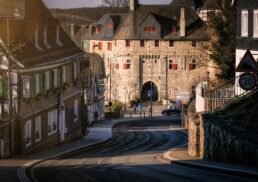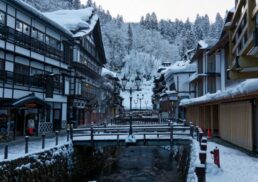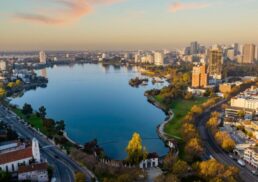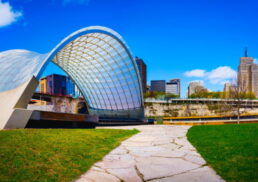Saxony, located in eastern Germany, is famed for its historical cities like Dresden and Leipzig, stunning landscapes like Saxon Switzerland, and cultural treasures such as Meissen porcelain. This guide covers what makes Saxony German unique, from its rich history and cultural milestones to its natural wonders and must-visit attractions.
Table of Contents
Key Takeaways
Saxony is a culturally rich region with over 500 museums, renowned craftwork traditions like Meissen porcelain and Plauen lace, and vibrant cities such as Dresden, Leipzig, and Chemnitz.
Saxony’s historical significance spans from its medieval roots in the Holy Roman Empire to its pivotal role in the Industrial Revolution and the Peaceful Revolution of 1989, shaping its current status as a center of high-tech industry and craftsmanship.
The diverse geography of Saxony includes major rivers like the Elbe, scenic mountain ranges such as the Ore Mountains and Saxon Switzerland, and a temperate climate ideal for outdoor activities and tourism throughout the year.
Discovering Saxony
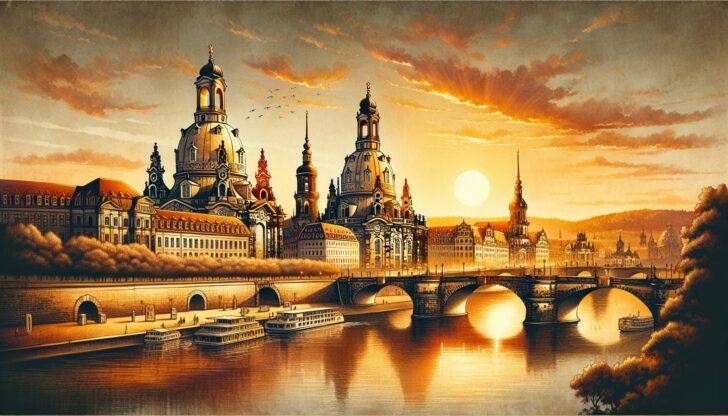
Saxony greets you like a vibrant, living museum. Over 500 museums, highlighting its extensive cultural heritage, render the region a hub of history and artistry. Saxony’s renowned craftwork traditions, including the exquisite Meissen porcelain and intricate Plauen lace, speak volumes about the region’s dedication to craftsmanship and detail. These artisanal treasures are more than just souvenirs; they are a testament to the region’s longstanding tradition of excellence.
Dresden and Leipzig, representing the pillars of Saxon culture and history, together with Chemnitz, compose Saxony’s urban trifecta, each adding a unique flavor to the region’s vibrancy. Dresden, known for its baroque splendor, and Leipzig, celebrated for its vibrant art and music scene, serve as more than just prominent cities in eastern Germany – they are cultural magnets attracting innumerable visitors annually. The population growth in these cities since 2000, driven by increased immigration and higher fertility rates, reflects a region on the rise, thriving with diversity and youth.
Beyond the bustling cities, Saxony’s smaller towns like Radebeul and Markkleeberg are also experiencing a renaissance. These towns, each with their unique charm and growing populations, contribute to Saxony’s overall appeal. Whether it’s the historical allure of its major cities or the quaint beauty of its towns, Saxony offers a diverse and enriching experience for every traveler.
A Glimpse into Saxon History
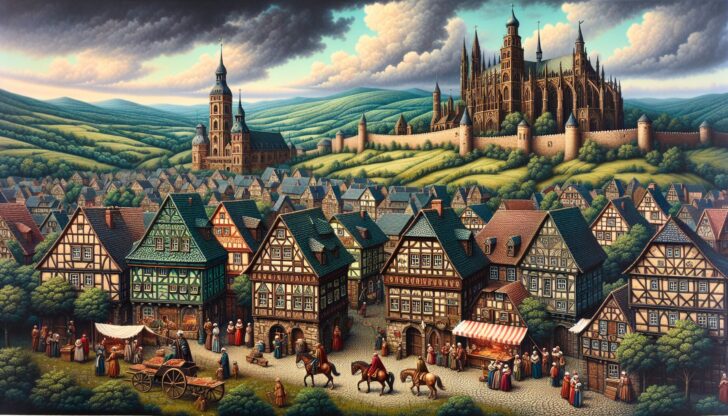
Saxony’s history is a rich tapestry woven over a millennium, from its ancient beginnings as a medieval duchy to its modern status as a vibrant German state. The name Saxony has been used for over a thousand years, transitioning from the medieval Duchy of Saxony to the present-day Free State of Saxony.
This voyage through time encompasses crucial events and transformations that have moulded the region into its current form.
Medieval Roots
The medieval Duchy of Saxony emerged around the 8th century AD, covering a vast expanse of northern Germany, including modern-day Bremen, Hamburg, and Lower Saxony. During the early medieval period, the Saxons converted to Christianity under the influence of Charlemagne, who outlawed pagan practices. This conversion marked the beginning of a new era for the region, integrating it more closely with the rest of Central Europe, including western Germany, eventually paving the way for influential figures like Martin Luther.
By the 10th century, the territory presently recognized as Saxony had integrated into the Holy Roman Empire. This inclusion played a crucial role in shaping the region’s political and cultural landscape. The influence of the Holy Roman Empire can still be seen in the historical market squares and architectural styles that adorn Saxony’s towns and cities, some of which date back over 1,000 years.
The Electorate Era
The Electorate era was a golden age for Saxony, marked by powerful rulers and significant cultural achievements. In the 18th century, Saxony became the Electorate of Saxony, ruled by prominent Electors like Augustus the Strong. Augustus, who was also elected King of Poland, fostered a close relationship between Poland and Saxony, enriching the cultural tapestry of the region.
In 1806, Napoleon elevated the Electorate to the Kingdom of Saxony in exchange for military support. This period saw the establishment of the Meissen Porcelain Manufactory in 1710, which became famous for its high-quality porcelain.
The Kingdom of Saxony joined the German Confederation in 1815, marking an important moment in German history as it integrated into the broader German political landscape, including other german states.
Industrial Revolution and Modern Times
Saxony played a pivotal role during the Industrial Revolution, becoming a hub for innovation and industry. Cities like Zwickau and Chemnitz were cradles of the German automobile industry before World War II. The region was also home to the first mainland European cities connected by a long-distance railway, linking Leipzig and Dresden in the 1830s.
However, the aftermath of World War II brought significant challenges. The Soviet occupation led to the nationalization of companies and the flight of skilled workers. Despite these hardships, Saxony became a center of the Peaceful Revolution in 1989, with major protests in Plauen, Leipzig, and Dresden contributing to the fall of communism.
Today, Saxony has re-established itself as a center of high-tech industry, car manufacturing, and handcrafted luxury products.
Geography and Landscape
Saxony’s diverse landscape is a testament to its natural beauty and geographical significance. Covering an area of 18,413 square kilometers, Saxony is home to a variety of natural attractions, including the Ore Mountains and Saxon Switzerland National Park.
Forests, rivers, and valleys contribute to the picturesque scenery that makes Saxony a captivating destination for nature enthusiasts.
Major Rivers and Valleys
Saxony’s geography is largely shaped by its major rivers, including:
the Elbe
Neisse
Mulde
White Elster
The Elbe River, coursing from southeast to northwest, holds particular significance, playing a key role in the region’s geography and economy. The Elbe Valley is one of the most picturesque regions in Saxony, with many towns and big cities situated along its banks, benefiting from its fertile lands and scenic beauty.
The Mulde River, a significant tributary of the Elbe, also contributes to Saxony’s landscape. These rivers and their valleys are not only vital for agriculture and trade but also offer numerous recreational opportunities for locals and visitors alike.
Mountain Ranges and Natural Beauty
The mountain ranges of Saxony, particularly the Ore Mountains and Saxon Switzerland, are renowned for their natural beauty and outdoor activities. Saxon Switzerland, with its hills and deep gorges along the banks of the Elbe River, offers breathtaking views and is a haven for hikers and climbers.
The Ore Mountains, reaching elevations of over 1,200 meters, are traditionally known for winter sports. The region’s highlands also offer cycling, hiking, and climbing activities, making it a year-round destination for outdoor enthusiasts. However, climate change poses a potential threat to the development of the winter sports business in this area.
Climate and Weather
Saxony enjoys a mild, temperate climate classified as Marine west coast, warm summer (Cfb). The region witnesses ample rainfall, with an average annual temperature around 10.38°C (50.68°F). August is the warmest month, with average highs of 23.61°C (74.5°F), while January is the coldest, with average lows of -2.77°C (27.01°F). The best time to visit Saxony is during the spring and summer months when the weather is pleasant and outdoor activities are in full swing.
Rainfall in Saxony:
Most abundant in August, averaging 54.08 mm (2.13 inches)
Driest month is April with 19.99 mm (0.79 inches) of precipitation
About 98.45 days of rainfall annually
Humidity levels average around 79.25% throughout the year
These temperate conditions make Saxony an inviting destination year-round.
Language and Dialects
Saxony exhibits linguistic diversity, with dialects like Upper Saxon and Lower Silesian frequently spoken. These dialects add to the region’s rich cultural mosaic, reflecting its historical and geographical influences. The Saxon dialect, in particular, has its unique charm and can be heard in everyday conversations across the region.
The Sorbs, a notable Slavic minority population, also call Saxony home, particularly in the Upper Lusatia region. The Sorbian language, specifically Upper Sorbian, is spoken here and is protected by special laws that ensure cultural preservation. This includes measures like bilingual street signs and administrative services in both German and Sorbian, highlighting Saxony’s commitment to cultural diversity and inclusion.
Major Cities and Urban Centers
Saxony’s urban landscape is dominated by its three largest cities: Leipzig, Dresden, and Chemnitz. Each of these cities presents an exclusive mix of history, culture, and modernity. Dresden and Leipzig are particularly renowned cultural centers, attracting visitors from all over the world with their rich heritage and vibrant arts scenes.
Other significant urban centers include Zwickau, Plauen, Görlitz, and Bautzen, each contributing to the region’s dynamic urban fabric.
Dresden
Dresden, the capital city of Saxony, is a treasure trove of cultural and historical landmarks. Some must-visit attractions include:
The Semper Opera House, renowned for its exceptional acoustics and stunning architecture
The Zwinger Palace, a baroque masterpiece that houses museums with collections of art, porcelain, and scientific instruments
The Frauenkirche, an 18th-century Lutheran church that was meticulously rebuilt after being destroyed during World War II, symbolizing Dresden’s resilience and dedication to preserving its history
These landmarks showcase the region’s rich artistic heritage and are a testament to Dresden’s cultural significance.
The city center, largely destroyed during the firebombing of February 1945, has been painstakingly reconstructed, restoring Dresden to its former glory. The Dresden State Art Collections, including works from the Renaissance to contemporary art, are a testament to the city’s long-standing cultural significance. Walking through Dresden, one can feel the pulse of history and the vibrancy of a city that has beautifully recovered from its tumultuous past.
Leipzig
Leipzig is a city that resonates with music and history. Known for its rich classical music scene, Leipzig has been home to illustrious composers like Johann Sebastian Bach and Felix Mendelssohn. The St. Thomas Church, where Bach served as a cantor, and the Gewandhaus concert hall, home to one of the world’s oldest symphony orchestras, are significant cultural landmarks. Leipzig’s vibrant modern art scene, featuring artists like Neo Rauch, adds a contemporary edge to its historical charm.
Leipzig also played a pivotal role in the fall of communism in Eastern Europe. The city was the epicenter of the Peaceful Revolution, with major demonstrations starting in 1989 that contributed to the collapse of the East German government. Today, Leipzig’s main railway station, Europe’s largest terminus station by floor area, signifies the city’s importance and connectivity.
Chemnitz and Other Notable Cities
Chemnitz, formerly known as Karl-Marx-Stadt during the GDR era, is a city of industrial heritage and modern reinvention. One of its most notable landmarks is the Karl Marx Monument, a massive bronze head of Karl Marx, symbolizing the city’s historical connection to socialist ideologies. Today, Chemnitz is a thriving industrial center, contributing to Saxony’s robust economy.
Görlitz, Germany’s easternmost city, is renowned for its well-preserved old town that miraculously survived World War II almost intact. The city’s heritage buildings and picturesque streets offer a glimpse into the architectural splendor of a bygone era. Other significant cities like Zwickau, Plauen, and Bautzen also add to the diverse urban landscape of Saxony, each with its unique historical and cultural offerings. This region, once part of East Germany, has truly preserved its rich history.
Cultural Highlights and Traditions
Saxony’s cultural scene is as vibrant as its historical narrative. The region is celebrated for its rich art and music traditions, boasting a legacy that encompasses globally acclaimed composers and esteemed music venues.
Traditional Saxon cuisine, with its hearty dishes and unique flavors, offers a delightful culinary journey. From the intricate craftworks of Meissen porcelain to the festive traditions like Dresden Stollen, Saxony’s cultural highlights are a feast for the senses.
Art and Music
Saxony’s contribution to the world of art and music is immense. The region has been home to legendary composers such as Johann Sebastian Bach, Richard Wagner, and Robert Schumann. The St. Thomas Choir of Leipzig and the Dresden Kreuzchor boys’ choir are among the world’s most famous musical ensembles, both deeply rooted in Saxony’s rich musical heritage. Notable music venues like the Semper Opera House in Dresden and the Gewandhaus concert hall in Leipzig are testaments to Saxony’s prominent place in the classical music world.
Beyond music, Eastern Saxony and Saxony Anhalt boast impressive art collections and host numerous music festivals and theatre performances throughout the year. The regions’ dedication to preserving and celebrating their artistic heritage makes them vibrant cultural centers in Germany.
Traditional Foods
Traditional Saxon cuisine is a hearty reflection of the region’s agricultural heritage. Some staple dishes include:
Sauerkraut, a fermented cabbage dish often served as a side
Sauerbraten, a pot roast typically served with red cabbage and dumplings
Rinderroulade, thinly sliced beef rolled with mustard, bacon, onions, and pickles
Potato soup, often rich and creamy, is a common starter that warms the soul.
Saxony is also famous for its seasonal treats, such as Dresden Stollen, a fruit bread traditionally baked during Advent. This festive delicacy, along with other local specialties like Klöße (potato dumplings), showcases the region’s culinary creativity and love for comforting, flavorful foods.
Must-Visit Attractions
Saxony overflows with must-see attractions that enchant travelers with their historical richness and natural allure. From the majestic Semper Opera House in Dresden to the awe-inspiring Monument to the Battle of the Nations in Leipzig, the region offers a plethora of landmarks to explore.
Other notable sites include Moritzburg Castle and the Bastei Bridge in Saxon Switzerland, each providing unique experiences that highlight Saxony’s rich heritage and stunning landscapes.
Königstein Fortress
Perched high above the Elbe River, Königstein Fortress is one of the largest hilltop fortifications in Europe, covering a 9.5-hectare plateau. The fortress’s ramparts stretch for 1,800 meters, with walls up to 42 meters high, providing a formidable defense structure. The well within the fortress is 152.5 meters deep, making it the second deepest well in Europe.
Königstein Fortress offers not just a glimpse into medieval military architecture but also stunning panoramic views of the surrounding countryside. Its historical significance and impressive size make it a must-visit destination for history enthusiasts and nature lovers alike.
Gardens at Muskau Park
Muskau Park, a UNESCO World Heritage Site since 2004, is the largest English garden in Central Europe. Straddling the border between Germany and Poland, the park offers a unique cross-border garden landscape that is both picturesque and serene. The park’s design features a network of paths, lakes, and bridges that create idyllic scenes and invite leisurely exploration.
The park’s cross-border nature adds to its charm, allowing visitors to experience a blend of German and Polish cultural influences. Whether you’re strolling through its lush gardens or crossing its elegant bridges, Muskau Park promises a tranquil and enriching experience.
Practical Information for Travelers
Journeying to and within Saxony is effortless, courtesy of its well-established transportation network. The region is connected by major motorways such as the A4 from Frankfurt, the A9 from Munich, and the A17 from the Czech Republic, ensuring seamless road travel. Saxony’s cities, including Dresden, Leipzig, and Chemnitz, are also well-served by long-distance coach networks and regular international connections.
For air travel, Dresden International Airport and Leipzig/Halle Airport offer regular flights to major hubs like Frankfurt and Munich, making Saxony easily accessible from around the world. Within Saxony, a comprehensive network of local routes connects major cities with smaller destinations, ensuring that travelers can explore the region with ease.
Whether by road, rail, or air, Saxony’s efficient transportation options make it a convenient and attractive destination for visitors.
Check out Saxony – Trip to the very East of Germany | Travel Blog.
Summary
In summary, Saxony is a region that seamlessly blends history, culture, and natural beauty. From its medieval roots and significant historical milestones to its vibrant cities and stunning landscapes, Saxony offers a rich and diverse travel experience. The cultural highlights, traditional foods, and must-visit attractions provide endless opportunities for exploration and enjoyment. As you plan your visit, let the charm and allure of Saxony guide you through an unforgettable journey. Embrace the past, savor the present, and look forward to a future filled with discovery in this remarkable region.
Frequently Asked Questions
What are the major cities in Saxony worth visiting?
The major cities in Saxony worth visiting are Dresden, Leipzig, and Chemnitz, each offering a unique blend of historical landmarks, cultural scenes, and industrial heritage. Experience the rich classical music scene in Leipzig, explore historical landmarks in Dresden, and delve into industrial heritage in Chemnitz.
What traditional foods should I try in Saxony?
When visiting Saxony, be sure to try traditional dishes like sauerbraten, Rinderroulade, potato soup, and Dresden Stollen to savor the rich culinary heritage of the region. Enjoy your culinary exploration in Saxony!
What is the best time to visit Saxony?
The best time to visit Saxony is during the spring and summer months when the weather is mild and pleasant, and outdoor activities are in full swing. August is the warmest month, while January is the coldest.
What are some must-visit attractions in Saxony?
Some must-visit attractions in Saxony include Königstein Fortress, the Gardens at Muskau Park, the Semper Opera House, Zwinger Palace, Moritzburg Castle, and the Monument to the Battle of the Nations in Leipzig, each offering unique historical and cultural experiences.
How can I travel to and within Saxony?
You can travel to Saxony by major motorways, long-distance coach networks, and international airports in Dresden and Leipzig. Within Saxony, there’s a comprehensive network of local routes connecting major cities with smaller destinations for convenient travel options.




